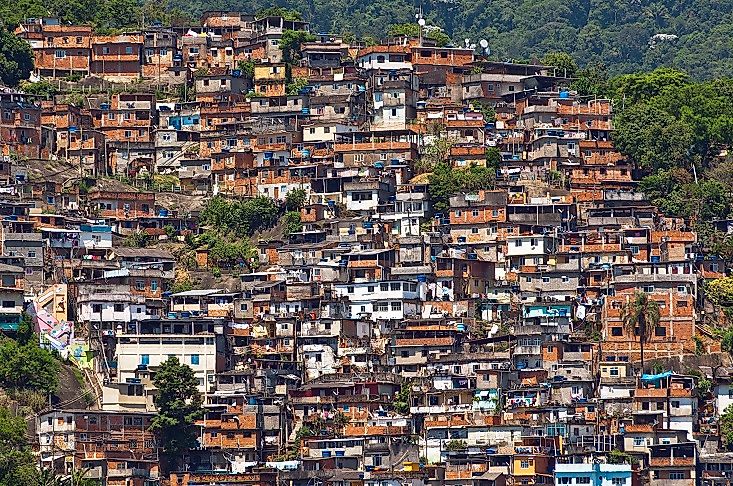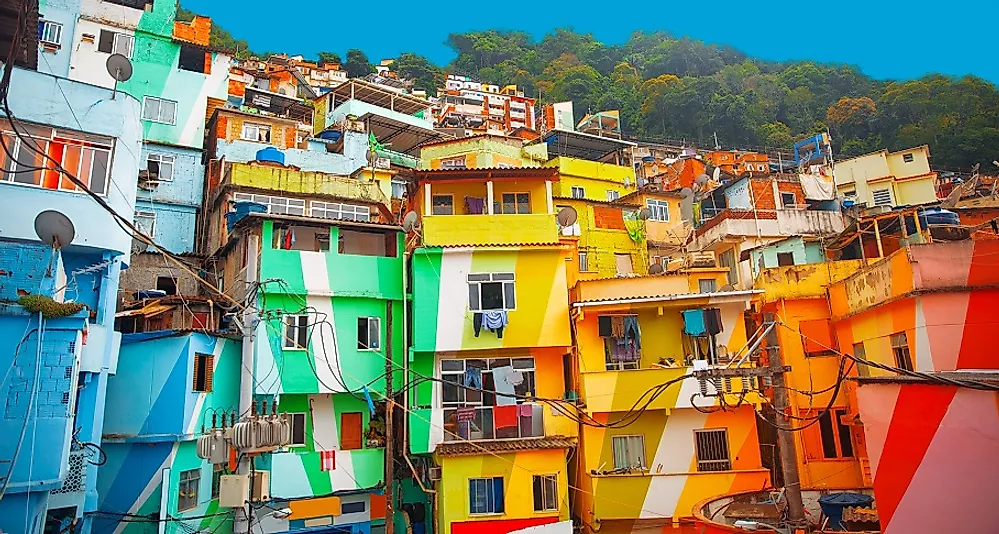What Are The Favelas Of Brazil?

5. Definition
The Favela, also spelled as Favella, is the name given to the slums or shantytowns in and around the large cities of Brazil. There are many favelas existing around the cities of Rio de Janeiro and Sao Paolo. A Favela exists when homeless people or squatters occupy vacant plots of land, and build their homes out of things they can get scavenging. Today, millions of Brazilians live in these mazes of shanties. Approximately 6% of the entire Brazilian population lives in Favelas as per the Census of 2010.
4. Historical Role
It was during the 1800s when around 20,000 veteran soldiers had moved from Canudos to Rio de Janeiro. These soldiers did not have a place to live. Therefore, when they settled down on Providence Hill in Rio, they named the place as Favela. The slums arose up more rapidly than the general population and development of the cities grew. Later, after the slavery era came to an end, many Latin Americans and slaves also came to settle near these bustling cities, and formed several urban slums or favelas. During 1940s and 1950s, the people from rural parts of Brazil came to make their fortune in the big cities and settled down in Favelas near the cities. Though these settlements were close to the big cities, yet the slums received no care from the government in terms of sanitation and electricity.
3. Modern Examples
Rocinha is Brazil’s largest favela in Brazil with an unofficial estimate of 180,000 people living here. Vila Aliança, Penha, Vila Nova, and others are found near the city of Rio De Janeiro. There are many settlements near Sao Paolo, as well as those of Heliopolis, Mauro, Campinho, and others. The big problem ailing these big cities and the presence of these settlements is the thriving drug trafficking industry. Not all of them are poor now, and many of them even consider it as a matter of pride to live in the places they and their respective families hailed from.
2. Drugs, Law, and Order
Several Brazilian cities' favelas are touched by some of the worst crime rates in the Latin American world. The western outskirts of Rio are a hub of drug trade, and the presence of armed bandidos makes the place quite risky. Ahead of the 2016 Rio Olympics, the Pacifying Police Unit, or UPP, is active in trying to improve the security around these quarters. These drug gangs hire young school-going boys in their gangs, and the fact that drug trade is a flourishing business made matters quite difficult. Around 12,000 residents in an average-sized favela are involved in gangs and drug trade due to lack of education and employment opportunities in other fields. These young boys got every kind of weaponry from hand grenades to machine guns to earn a livelihood.
1. Favela Culture and Daily Life

While many favelas are yet to be pacified but the act of pacifying and transforming a favela began. With several nongovernmental organizations (NGOs) stepping in to change the life of the people in favela, schools and other handicraft and self-employment means came up. Several residents from these favelas play a major role in making the Carnival in Rio world famous as well. Many favelas are even famous for the colorful paint schemes of their homes (such as those from Santa Marta pictured above), and the visual art, music, dance, and other forms of culture that their streets exude. Favelas are also often hotbeds for devout Brazilian Christianity, both Catholic and, increasingly in recent years, Protestant.











